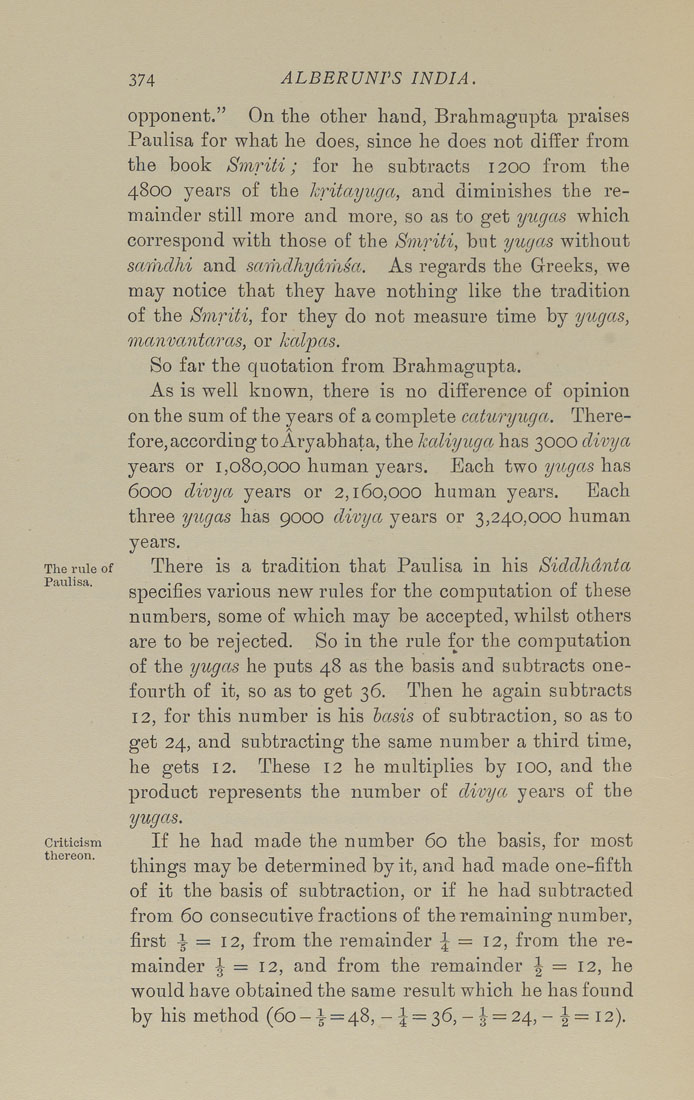374
ALBERUNPS INDIA.
The rule of
Paulisa.
Criticism
thereon.
opponent." On the other hand, Brahmagupta praises
Paulisa for what he does, since he does not differ from
the book Smriti; for he subtracts 1200 from the
4800 years of the kritayuga, and diminishes the re¬
mainder still more and more, so as to get yugas which
correspond with those of the Smriti, but yugas without
samdhi and samdhydriisa. As regards the Greeks, we
may notice that they have nothing like the tradition
of the Smriti, for they do not measure time by yugas,
manvantaras, or kalpas.
So far the quotation from Brahmagupta,
As is well known, there is no difference of opinion
on the sum of the years of a complete caturyuga. There¬
fore, according to Aryabhata, the kaliyuga has 3000 divya
years or 1,080,000 human years. Each two yugas has
6000 divya years or 2,160,000 human years. Each
three yugas has 9000 divya years or 3,240,000 human
years.
There is a tradition that Paulisa in his Siddhdnta
specifies various new rules for the computation of these
numbers, some of which may be accepted, whilst others
are to be rejected. So in the rule for the computation
of the yugas he puts 48 as the basis and subtracts one-
fourth of it, so as to get 36. Then he again subtracts
12, for this number is his hasis of subtraction, so as to
get 24, and subtracting the same number a third time,
he gets 12, These 12 he multiplies by 100, and the
product represents the number of divya years of the
yugas.
If he had made the number 60 the basis, for most
things may be determined by it, and had made one-fifth
of it the basis of subtraction, or if he had subtracted
from 60 consecutive fractions of the remaining number,
first ^ = 12, from the remainder \ = \2, from the re¬
mainder I =12, and from the remainder \ — 12, he
would have obtained the same result which he has found
by his method (60-1 = 48, - 1 = 36, - J = 24, - |= 12),
|








